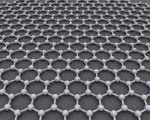August 16, 2022, Taipei — Memory company TEAMGROUP announced announced MP44L M.2 PCIe 4.0 SSD, featuring what it said is a breakthrough cooling technology: the industry’s first SSD label to incorporate graphene copper foil. This less than 1mm thick heat dissipating graphene SSD label has received Utility Patents [1] and is adhered to the SSD to provide […]
TEAMGROUP Claims 1st Heat Dissipating Graphene PCIe 4.0 SSD Label for Cooling Performance
Pusan National University: Research Sheds Light on Friction in Multi-layered Graphene
March 9, 2022 — According to research released by Pusan National University in South Korea, multi-layered graphene is a promising carbon-based nanomaterial for a variety of next-generation technologies, but the relationships between its surface structures and properties are not entirely clear. Now, in a recent study, Pusan National University scientists analyze how surface structures like […]
Indian Institute of Tech, Max-Born Institut Team Say Graphene Valleytrionics Could Enable Room Temperature Quantum
A research team from the Indian Institute of Technology and Max-Born Institute of Germany have published a study on a novel approach for encoding quantum information: valleytronics. Aside from their charge, electrons have another parameter that can be manipulated: their “valley pseudospin,” which are the local minima in the energy bands of solids that can […]
Silicon’s Successors: 2-D Materials Aim to Carry the Post-Moore’s Law Torch
Even as a flurry of new silicon has been launched recently by AMD and Arm, with more to come this week from Intel, silicon’s five decades of microprocessor dominance could start to fade in the relatively near future. The problem is that transistors etched into silicon will soon be shrunk to 5 nanometers, with 3 […]
Supercomputing Graphene Applications in Nanoscale Electronics
Researchers at North Carolina State University are using the Blue Waters Supercomputer to explore graphene’s applications, including its use in nanoscale electronics and electrical DNA sequencing. “We’re looking at what’s beyond Moore’s law, whether one can devise very small transistors based on only one atomic layer, using new methods of making materials,” said Professor Jerry Bernholc, from North Carolina University. “We are looking at potential transistor structures consisting of a single layer of graphene, etched into lines of nanoribbons, where the carbon atoms are arranged like a chicken wire pattern. We are looking at which structures will function well, at a few atoms of width.”






